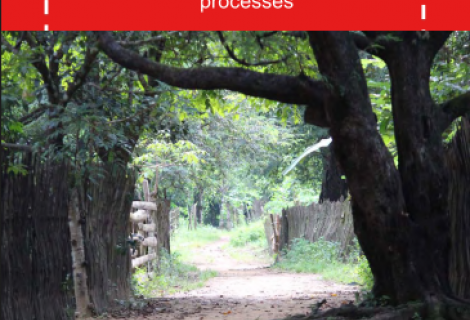
Externally designed, top down plans which are based on assumed knowledge of a community’s problems, run the risk of activities and projects being implemented that do not address the real needs of the people concerned. It has long been affirmed that people themselves know their problems and issues and have their own ideas about what they need, based on their reality. The participatory village development processes which comprise the Village Book focus on communities assessing and analysing their current needs, agreeing on solutions and priorities, and making concrete village development plans. It is not only about planning. It is essentially about a dynamic process of, and for change, which is continuously reviewed and updated as the community takes action and as the environment changes. This manual is designed to prepare facilitators with the knowledge, skills and understanding required to effectively guide community members to undertake participatory and inclusive processes of analysis and planning. It urges attention to who participates, who decides and who benefits. The President of the Government of the Republic of the Union of Myanmar has promoted bottom-up, people-centered development. The Village Book is a practical tool to realize this vision. The Village Book provides micro-level development plans, based on people’s expressed needs and their dream for a better future in their village. The Village Book enables development actors –both state and non-state – to understand the scenario in the village and to intervene according to people’s expressed needs.
Content Foreword 1. Introduction 2. Background 3. Preparing the facilitator to guide the village planning process and Village Book development 4. Process flow diagram of village development planning and the Village Book 5. Comprehensive Village Analysis – Step 15.1 Social analysis5.2 Economic analysis5.3 Vulnerability analysis5.4 Women’s situation analysis5.5 Power and relationship analysis 6. Mapping the status of rights – Step 26.1 Problem prioritization6.2 Problem tree analysis6.3 Rights mapping/understanding problems from the rights perspective 7. Baseline of the current situation – Step 3 8. Participatory indicators of change/success – Step 48.1 Dream map8.2 Indicators of change/success 9. Village development/Action plan – Step 510. Detailed implementation plan – Step 611. Using the Village Book to link with government plans and mobilise resources12. Using the Village Book to measure change13. Training to facilitate the Village Development Plans and Village Book process
Content Foreword 1. Introduction 2. Background 3. Preparing the facilitator to guide the village planning process and Village Book development 4. Process flow diagram of village development planning and the Village Book 5. Comprehensive Village Analysis – Step 15.1 Social analysis5.2 Economic analysis5.3 Vulnerability analysis5.4 Women’s situation analysis5.5 Power and relationship analysis 6. Mapping the status of rights – Step 26.1 Problem prioritization6.2 Problem tree analysis6.3 Rights mapping/understanding problems from the rights perspective 7. Baseline of the current situation – Step 3 8. Participatory indicators of change/success – Step 48.1 Dream map8.2 Indicators of change/success 9. Village development/Action plan – Step 510. Detailed implementation plan – Step 611. Using the Village Book to link with government plans and mobilise resources12. Using the Village Book to measure change13. Training to facilitate the Village Development Plans and Village Book process